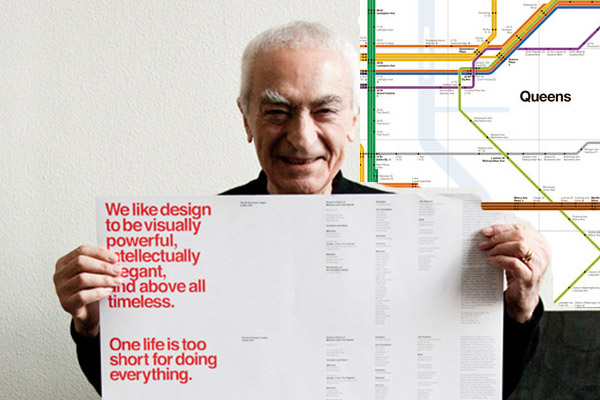Massimo Vignelli's career in design was that of a master. As a leader in design, Vignelli took raw data/information and made it gorgeous. At ICOSA Information is equated to raw knowledge. It is acquired in its most basic form by the five sense (sight, scent, taste, smell, and touch) and it's stored and processed in the mind. Without information the mind is useless. Therefore, we (ICOSA) think of information as the building block of the mind. Vignelli was a master of taking information and translating it atheistically for everyone to understand and use functionally. At the forefront of Vignelli's work was information visually represented in a simplistic and clear way. Vignelli's work included maps, books, brand identity and industrial design.
Six months ago I had the opportunity to attend one of Vignelli's speaking events. His design has inspired me for years to work from the infamous grid. The grid is a way to organizes information clearly. Until half a year ago I applied my own grid, however I found a bound book of his grid offered by Mohawk that I would suggest to anyone who sketches using a grid. Pentagram quotes Vignelli as saying, "The grid is an integral part of book design. It's not something that you see, It's just like underwear: you wear it, but it's not to be exposed. The grid is the underwear of the book."
One of his most memorable contributions to information design was for the New York City subway. Designed in 1972, and continually updated, the map is globally iconic. The map's design was more important than geographical accuracy. Instead clarity of design was Vignelli's focus. This brought about numerous complaints to the Metropolitan Transportation Authority. The map was argued that it did not represent NYC accurately, for example Central Park was represented as a square, not a rectangle. Regardless, the map is loved for its abstract and simplistic design. 40 years later, Vignelli's map is still on mugs and cell phone cases, and are still available at Transit Museum Store and it's design will continually be updated as the city changes. In 2008, both Massimo and Lella (his wife) donated their entire design archive to the Vignelli Center for Design Studies at the Rochester Institute of Technology, positioning RIT on the international forefront of design studies. On May 27th 2014, at age 83 Massimo Vignelli passed away.

